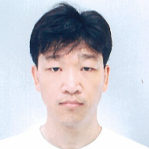“Coastal Dynamics, Hazards, and Numerical Modelling” in Memory of Prof. Byung Ho Choi
A special issue of Journal of Marine Science and Engineering (ISSN 2077-1312). This special issue belongs to the section "Coastal Engineering".
Deadline for manuscript submissions: closed (31 July 2022) | Viewed by 25781
Special Issue Editors
Interests: coastal hazards; typhoons; climate change impacts on typhoons, storm surge, tsunami, and coastal flood
Special Issues, Collections and Topics in MDPI journals
Interests: numerical model; coastal circulation; air–wave–sea interaction; typhoon; tsunami; scientific visualization
Interests: tide; estuary; sediment; morphological change; finite element model; tsunami modeling
Interests: coastal environment; coastal hazard; numerical modeling; construction and analysis of local current data
Interests: numerical modelling; data assimilation; coupled simulation; time series analysis; environmental tracer modelling; artificial intelligence
Special Issues, Collections and Topics in MDPI journals
Special Issue Information
Dear Colleagues,
Prof. Byung Ho Choi, a very active contributor to our coastal engineering community and promoter of our discipline, passed away on 3rd July 2020. During his long career, beginning from the late 1970, he made significant contributions to a diverse range of areas, including theory and modeling of regional and global tides, tropical cyclone induced storm surges and waves, tide–wave–surge-coupled storm surge and storm wave modeling, tsunami modeling and field works, coastal environmental impact assessment due to coastal development, and coastal circulation in East Asian marginal seas. His profound influence spanned from theoretical to numerical and practical coastal engineering and oceanography.
Prof. Byung Ho Choi has spent the 30+ years of his successful career at Department of Civil and Environmental Engineering, Sungkyunkwan University, South Korea, one of the oldest institutes in the world. At the time of his initial recruitment, the department was still in the developing stage, and Prof. Byung Ho Choi had the opportunity to help shape the civil engineering department, spending time and energy to initiate and develop the coastal engineering discipline. He developed a vigorous and productive research group that is truly dedicated to teaching coastal engineering at all levels and educating the next generation of coastal and ocean engineers in South Korea.
Prof. Byung Ho Choi was one of the co-founders of Korean Society of Coastal and Ocean Engineers (KSCOE), renowned for his leadership and initiatives to foster international collaboration on coastal and ocean engineering.
Prof. Byung Ho Choi was a very special person, full of enthusiasm and undeniable energy, complemented by his unique characteristics and sense of humor. He was also a pioneer and never hesitated to try new ideas, often crossing borders of disciplines, which is the legacy he left to his students and colleagues. All of us share the good fortune and privilege to have had him as a dear teacher, friend, and colleague—an extraordinary friend and a terrific professor, from which we all benefited.
We therefore feel obliged and honored to collect a series of papers by his students, friends, and colleagues together in this Special Issue dedicated to Prof. Byung Ho Choi. In this Special Issue, we are interested in articles on coastal processes and coastal dynamics, not only considering tides, waves, storm surges, and tsunamis—which build upon Prof. Choi’s achievements—but also other issues affecting the coastal environment and local and regional circulation in marginal seas, addressing a broad scope and thereby paying tribute to the rich scientific curiosity of Prof. Choi.
Prof. Dr. Han Soo Lee
Dr. Kyeong Ok Kim
Dr. Seung-Buhm Woo
Dr. Jin-Hee Yuk
Dr. YoungJin Choi
Guest Editors
Manuscript Submission Information
Manuscripts should be submitted online at www.mdpi.com by registering and logging in to this website. Once you are registered, click here to go to the submission form. Manuscripts can be submitted until the deadline. All submissions that pass pre-check are peer-reviewed. Accepted papers will be published continuously in the journal (as soon as accepted) and will be listed together on the special issue website. Research articles, review articles as well as short communications are invited. For planned papers, a title and short abstract (about 100 words) can be sent to the Editorial Office for announcement on this website.
Submitted manuscripts should not have been published previously, nor be under consideration for publication elsewhere (except conference proceedings papers). All manuscripts are thoroughly refereed through a single-blind peer-review process. A guide for authors and other relevant information for submission of manuscripts is available on the Instructions for Authors page. Journal of Marine Science and Engineering is an international peer-reviewed open access monthly journal published by MDPI.
Please visit the Instructions for Authors page before submitting a manuscript. The Article Processing Charge (APC) for publication in this open access journal is 2600 CHF (Swiss Francs). Submitted papers should be well formatted and use good English. Authors may use MDPI's English editing service prior to publication or during author revisions.
Keywords
- tides and tsunamis
- storm surges and storm waves
- tropical cyclone and typhoons
- coastal dynamics and circulation
- coastal processes and sediment
- tsunami field survey
- tide–wave–surge-coupled model
- storm surge modeling
- tsunami modeling









